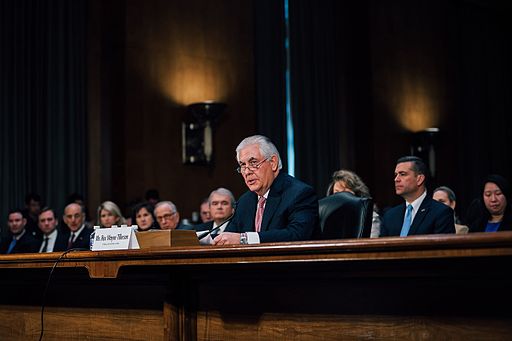WASHINGTON — Tuesday’s announcement that Secretary of State Rex Tillerson would be leaving his post was just the latest shakeup in a tumultuous 14 months for President Donald Trump’s administration.
Tillerson will join more than 30 top officials who have already come and gone from the White House in the time since the president took office. An estimate by Kathryn Dunn Tenpas at the Brookings Institution found that the turnover rate for personnel at the Trump White House is as high as 43 percent. At the same point in their presidencies, former presidents Barack Obama and George W. Bush had turnover rates of 24 and 33 percent, respectively.
Trump announced today that he had fired Tillerson and replaced him with CIA Director Mike Pompeo, a former Republican House member. Pompeo, in turn, will be replaced as head of the CIA by Gina Haspel, the current deputy director.
Tillerson, the former Exxon Mobil CEO, had largely operated on the fringes of the Trump administration and frequently found himself in disagreement with the president, whom he once, according to reports, privately disparaged as “a moron.”
Tillerson cut short a trip to Africa and was caught by surprise after returning to Washington earlier today from a nearly weeklong trip. “We were not really thinking the same,” Trump told reporters today at the White House. “Really, it was a different mindset, a different thinking.”
The Secretary of State’s departure comes just one week after the announcement that top economic adviser Gary Cohn would be leaving, reportedly over a disagreement with the president about tariffs. And just one week before that, White House Communications Director Hope Hicks announced that she would also be leaving. The WHCD position, in particular, is already notorious for its turnover: in just over a year, Hicks was the fourth person to hold the communication post as well as the longest to serve in that role.
Trump’s unorthodox managerial style seems to be a defining factor in the startling rapidity with which several top posts have been filled and subsequently vacated.
“We don’t know what the heck his management style is,” says Paul Light, director of government studies at the Brookings Institution. “Sometimes he appears to consult; other times he’s a free radical. He flips from one to the other, he’s not comfortable in any management style.”
Critics have suggested that the high turnover could be a sign of chaos within the White House that could possibly portend weaknesses in areas like national security. The president rebuked these claims after Cohn’s departure was announced, saying in a tweet, “The new Fake News [sic] narrative is that there is CHAOS in the White House. Wrong! People will always come & go, and I want strong dialogue before making a final decision. I still have some people that I want to change (always seeking perfection). There is no Chaos, only great Energy!”
Personal conflict with the president has seemed to be a primary factor motivating several key White House departures since Trump’s inauguration in January 2017. Among those who have left include Chief Strategist Steve Bannon, Chief of Staff Reince Priebus and Health and Human Services Secretary Tom Price, all of whom were out before the one-year mark.

